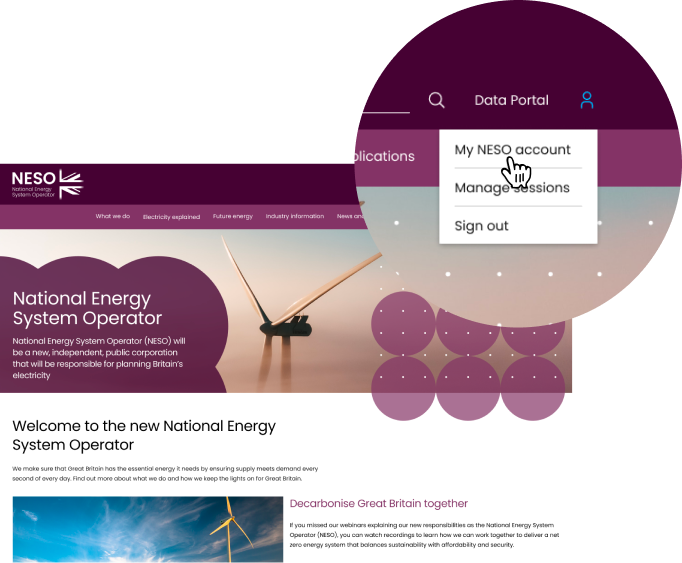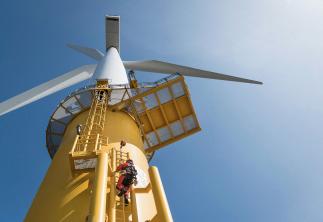
Transitional Centralised Strategic Network Plan (tCSNP)
We have been enhancing our approach to planning the GB electricity transmission network through a series of transitional CSNPs. These are a bridge to the enduring CSNP and also perform the role of the Network Options Assessment (NOA).
The tCSNP provides our recommendation for which network reinforcement projects should receive investment, and when. While we provide economic recommendations that will enable the flow of electricity around the transmission system to facilitate the evolving energy landscape, we are not responsible for making the final decision on what, where, and when to invest.
We consulted on the methodology for the refreshed second tCSNP over the December 2024 to January 2025 period. This was at the same time as our consultations for the Strategic Spatial Energy Plan (SSEP) draft methodology and the enduring CSNP high level principles. Having taken account of feedback, we submitted this methodology to Ofgem at the end of March 2025.

Download our latest methodology:
The tCSNP2 Refresh, the Pathway to 2030 Holistic Network Design and Beyond 2030 report
We have published two transitional CSNP reports so far:
- In July 2022, the first transitional CSNP analysis in the Pathway to 2030 Holistic Network Design set out a single, integrated approach that supports large scale delivery of electricity from offshore wind, to where it is needed across Great Britain. This is to help unlock the UK Government's ambition for 50GW of offshore wind by 2030.
- In March 2024, the then Electricity System Operator (ESO) published the second transitional CSNP analysis in the Beyond 2030 report: A national blueprint for a decarbonised electricity system in Great Britain recommending a coordinated offshore and onshore network design that can connect 86GW of offshore wind.
Most onshore recommended reinforcement projects in the Beyond 2030 report were at an early development stage. This means there is a need to explore, develop, and agree the appropriate technical solution, design, costs, and delivery timelines. Ofgem has requested that Transmission Owners develop their infrastructure projects in Beyond 2030 onshore analysis further before they can be funded. These options, along with any other proposed options, will be assessed in a refresh of the second transitional CSNP analysis, hence known as the “tCSNP2 Refresh”.
As we move towards an energy landscape that is dominated by renewable and zero carbon electricity, we need to take a more strategic and coordinated approach to transmitting large volumes of renewable generation to our demand centres across GB. Whilst our current network meets our needs for today, looking to the future, we need to evolve the transmission network to make sure it is capable of enabling delivery of the Government's 2030 clean power ambition and net zero target.
What the tCSNP can and can't do
- Recommend the most economic reinforcements, whether infrastructure build or alternatives, for investment over the coming years, to meet bulk power transfer requirements as outlined by the ETYS.
- Recommend when investments should be made under the different scenarios set out in the FES to deliver an efficient, coordinated, and economic future transmission system.
- Recommend whether the TOs should start, continue, hold, or stop reinforcement projects to make sure they are completed at a time that will deliver the most benefit to consumers.
- Inform the updated HND and Beyond 2030 report of the most economic reinforcements for the onshore system that complement the offshore network design.
- Address network compliance with NETS SQSS. Additional onshore reinforcements may be identified for network compliance, which is an integral part of designing a secure, operable, transmission system capable of facilitating net zero.
- Recommend customer connections. The tCSNP only recommends the most economic reinforcement to resolve wider network issues.
- Insist that reinforcement options are pursued. We can only recommend options based on our analysis. The TOs or other relevant parties are ultimately responsible for what, where and when they invest.
- Comment on the details of any specific option, such as how it could be planned or delivered. The TOs or other relevant parties are responsible for how they implement their options and their consenting.
- Evaluate the specific designs of any option, such as the choice of equipment, route, or environmental or community impacts. These types of decisions can only be made by the TOs or other relevant parties when the options are at a more advanced stage.
- Assess network asset replacement projects which don’t increase network capability or individual customer connections.
- Procure products or services. The tCSNP may highlight a need to explore options further, either through our Network Services programme or further engagement with the industry.
- Recommend options that offer no benefit to the boundaries we assess.
What is the tCSNP2 Refresh?
The tCSNP2 Refresh is a key part of the network development process that will enable the delivery of the government's offshore wind ambition. The tCSNP2 Refresh takes into consideration the recommended offshore network design that is set out in the HND and updated in the Beyond 2030 report. It identifies where the onshore electricity transmission network there is a need for wider network reinforcement, to enable additional electricity generation to flow from offshore wind farms to where it is required, onshore.
The tCSNP2 Refresh process follows the newly reviewed and consulted on tCSNP2 Refresh methodology that we have just submitted to Ofgem.
Discover more about Network Development
Beyond 2030
The Beyond 2030 report builds on top of the Holistic Network Design and makes a set of network recommendations throughout the 2030s.
Subscribe to our newsletter
Subscribe to our monthly newsletter to stay up to date with all the latest news in Strategic Network Development, including tCSNP and CSNP
Contact us
If you have any questions or would like to get in touch, please feel free to contact us.






